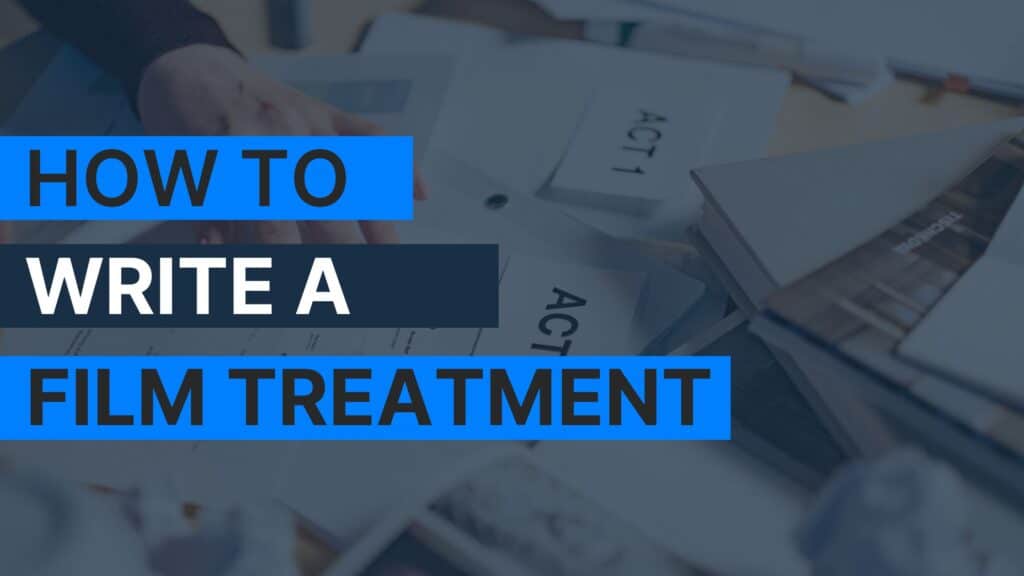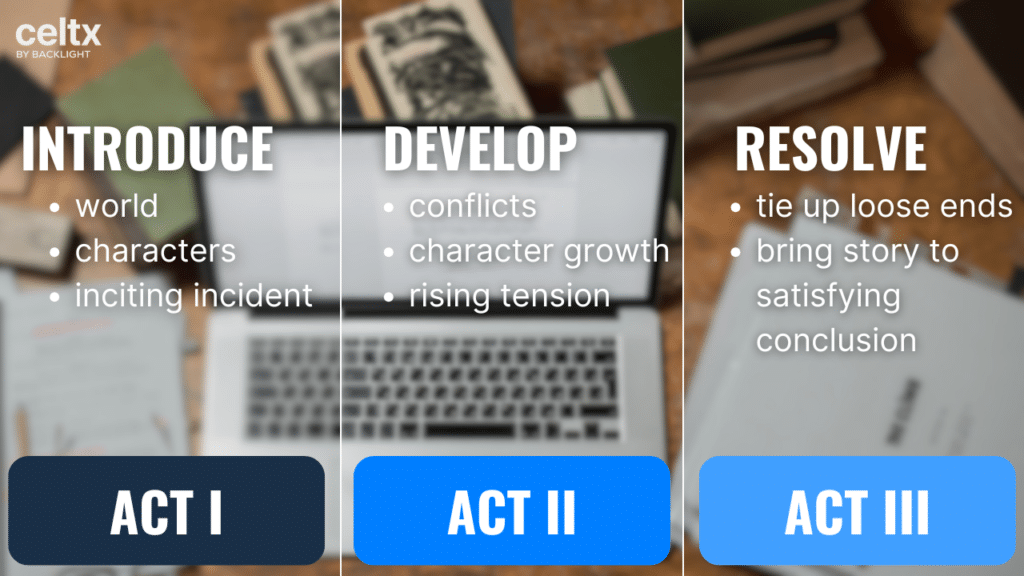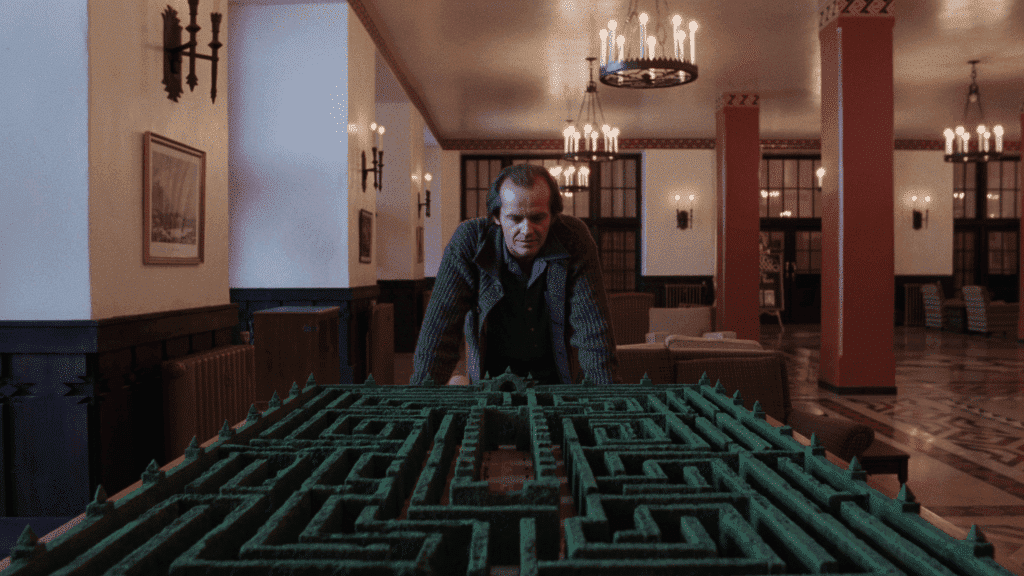
Every great film starts with a single idea. But before that idea can become a fully-fledged screenplay, it often takes the form of a film treatment.
What is a film treatment? It’s a detailed summary of your film’s story, outlining key narrative elements and character arcs, and serving as a blueprint for the screenplay itself.
A vital tool for screenwriters, a treatment helps us to shape our story while also serving as a pitch document for industry professionals. It doesn’t matter if you’re a beginner or seasoned writer; it’s essential that you know to understand how to write a film treatment, as a strong one can make the difference between having your project greenlit and being thrown on the discard pile.
In today’s blog, we’ll be exploring what a film treatment is, and how you can create one using our step-by-step guide. Also make sure to look out for the common mistakes you need to avoid, and some examples of not just good, but great film treatments!
And away we go…
Table of Contents
- What Is a Film Treatment?
- Why Do You Need a Film Treatment?
- Key Elements of a Film Treatment
- How to Write a Film Treatment
- Film Treatment Examples
- Frequently Asked Questions
- Conclusion
What Is a Film Treatment? A Detailed Overview
A film treatment is a detailed summary of a film’s story. Written in prose form, it outlines key narrative elements, character arcs, and important scenes and serves as a blueprint for the screenplay itself.
In essence, it gives a clear overview of the project for producers, directors, and any potential investors – anyone who has an interest in your story.
A film treatment format (unlike a script, which is heavily formatted and structured) reads more like a short story but remains concise and focused on major plot developments. Typically, it’s written in the present tense and emphasizes the core narrative beats without getting lost in unnecessary details.
Treatments are used in various stages of a film’s development and can help flesh out your ideas before committing to a full script. They’re also often requested by producers or executives who want to assess a project’s viability before investing precious time and resources to develop it further.
Treatment vs. Script
While a screenplay includes dialogue, scene formatting, and specific cinematic details, a treatment is more like an extended synopsis, focusing on storytelling rather than technicalities.
Another key difference is that a treatment is generally much shorter than a screenplay, ranging from a few pages to about 15-20 pages, depending on how complex the story is. It’s designed to give readers an engaging overview of the movie’s vision without the heavy lifting of reading the entire script.

Why Do You Need a Film Treatment?
Firstly, treatments are useful tools for us as writers as they help us refine our story’s structure. It also helps us organize our ideas, identify weak points in the narrative, and to ensure the story flows smoothly. Ultimately, it’s a fantastic tool to create an efficient and structured writing process.
By working on a treatment first, we can experiment with different story elements without committing to writing an entire script. This makes it easier to hone the plot, adjust pacing, and enhance character development. We can also spot any story flaws that may not have been immediately obvious in the conceptual stages of the project.
Then, of course, comes the industry’s expectations. Many studios, production companies and funding bodies require a film treatment before considering a screenplay. This means that can easily assess the strength of a story before committing time, money and resources.
So, why would executives want to read a treatment, then the script? Surely that takes more time and effort? Well, we all know that the entertainment industry is extremely competitive, meaning executives don’t have the time to physically read full screenplays for every pitch they receive. A treatment provides a streamlined way to evaluate potential projects.
Treatments can also serve as marketing tools, helping screenwriters and filmmakers sell their ideas.
Ready to take your film idea to the next level?
Write your screenplay with Celtx and start shaping your
story with intuitive script writing software.
Get started today!
Key Elements of a Film Treatment
Okay, so what is in a film treatment? Let’s break down the key elements you’ll need to include:
Title and Logline
These first two elements should be compelling and reflect the core of your movie.
You’ll want to first add your title, then the logline, which is a one to two-sentence summary that captures the premise and stakes of your story. It should answer the following questions succinctly:
- Who is the protagonist?
- What is their primary goal or challenge?
- What are the stakes involved?
Here’s an example from action-comedy movie Free Guy:
When a bank teller discovers he’s actually a background player in an open-world video game, he decides to become the hero of his own story – one that he can rewrite himself.

Summary of Key Story Beats
A well-structured treatment highlights your major story beats, including:
- Opening scene to establish the setting and protagonist.
- Inciting incident, the event that propels the story forwards.
- The key obstacles and developments through rising action.
- Climax, the moment of highest tension.
- Resolution, how the story concludes and resolves character arcs.
Main Characters
It’s also advised that you introduce the main characters, their goals, and how they evolve throughout your story. Remember, strong character arcs add emotional depth and engagement to the treatment.
Consider including notable details about each character, including their personality traits, strengths and weaknesses, relationships with other characters, their internal and external conflicts, and how they change over the course of the film.
For more on creating well-rounded and relatable characters, click here for our guide!

How to Write a Film Treatment: A Step-by-Step Guide
Now we know the key elements of a film treatment, let’s explore how we can create something engaging and exciting. In this section, we’ll dive into how to write a film treatment that’s clear, compelling, and ready to impress potential investors.
Step 1 | Brainstorming Your Story
Before diving into your treatment, take the time to develop your story idea. Here are some key questions you should ask yourself as you go.
- What is the central conflict?
- Who are the main characters?
- What is the emotional core of the story?
- What themes does the film explore?
TOP TIP: Use brainstorming techniques such as mind mapping, freewriting, or outlining key events to flesh out your story idea. If you find yourself in the midst of writer’s block, we’re on hand to help you get back on track. Check out our Overcoming Writer’s Block Strategies blog post for all our tips and tricks.

Step 2 | Structuring Your Treatment
Once you have your story mapped out, it’s time to map out the structure of your treatment. Most will follow a clear three-act structure:
Act 1 | Setup
Here, you’ll introduce the world, characters, and inciting incident.
Act 2 | Confrontation
You’ll write about how the conflicts develop, your characters’ growth and rising tension.
Act 3 | Resolution
Finally, you’ll bring the story to its satisfying conclusion.

Related Reading: The Three Act Structure in Screenwriting
Step 3 | Writing in a Compelling and Concise Way
When writing your treatment, strike a balance between providing enough detail to engage the reader and maintaining a concise narrative flow.
Write it in the present tense using active voice, with a sense of immediacy and immersion for the reader. For example, instead of writing:
The detective was walking through the alley.
Try:
The detective walks through the alley.
This simple shift creates a more vivid and engaging reading experience.
While it may be tempting, avoid including technical details and save these for the screenplay itself. Leave out camera angles, lighting or other cinematic elements for now and concentrate on the emotions, conflicts, and actions of your characters.
Keep sentences concise and to the point to ensure your treatment is engaging from start to finish. Avoid long, convoluted sentences that could distract from the core narrative.
Each paragraph should have a specific purpose, whether it’s setting up a scene, establishing a character, or advancing the plot. A well-structures and smoothly flowing treatment will make it easier for producers and executives to visualize the film and understand your vision.
Step 4 | Editing and Refining
Once you’ve written the initial draft of your treatment, the next step is to refine and polish it. Reading it multiple times will help you identify inconsistencies, weak areas, or overly complex sections. During this stage, it’s essential you assess whether your story flows naturally and if your characters’ motivations and arcs are both compelling and clear.
It’s natural to write too much for your first draft, so trimming any unnecessary details is essential! While it’s important to paint a vivid picture, excessive descriptions or overly intricate explanations can slow your pacing down. Every word should contribute to the story’s overall progression. If it doesn’t, it needs to be rewritten or reworked!
We also recommend you seek feedback from peers, mentors, or industry professionals. Another set of eyes can spot issues that you as the writer may have overlooked.
Every writer needs constructive criticism when it comes to their work. It’s a valuable asset to fine-tune your treatment into a polished and professional document.

Film Treatment Examples and Templates
Case Study #1 | E.T. 2: Nocturnal Fears
Our first film treatment example is Steven Spielberg’s vision for a non-produced sequel for E.T: The Extra-Terrestrial. While this proposed sequel was never produced (and for very good reason), it’s a prime example of how to write a compelling treatment.
Sitting at just 10-pages, the treatment is a concise yet engaging overview of the proposed plot, separated into scenes by page dividers. It talks about Elliot, Michael and Gertie’s relationship following the events of the original movie, plus how they navigate the new obstacles the plot presents.
While we do have the benefit and context of the previous movie, this treatment does well as a standalone, giving us a clear insight into the characters’ motivations and why they do what they do.
While it was criticized as being a betrayal of the original movie’s themes, taken at face-value, it shows Spielberg’s skill and vision as a filmmaker. It was never made for extremely good reason!
Read the full treatment here.

Case Study #2 | The Shining
So, in answer to the question, ‘how long is a film treatment?’, it wholly depends on the project. For new screenwriters, the shorter, the better, so ten pages or less is where you want to aim.
Sitting at a whopping 81 pages, Stanley Kubrick’s original treatment for The Shining is broken down into separate scenes and sequences, giving a clear overview of the movie’s pace. Kubrick has always been known for his meticulous perfectionism when it came to his movies, so used the treatment as an opportunity to iron out some of the weaker plot points for Stephen King’s original novel. He did this in partnership with novelist Diane Johnson.
Despite the treatment then being developed into a screenplay, the story changed shape constantly, even during filming which took a year to complete. It’s a good thing that The Shining is still considered to be one of the best horror movies ever produced!
Take a look at the full treatment here.

Common Mistakes to Avoid
While creativity and conciseness should be the focus of your treatment, here are some things you need to avoid!
Over-Explaining vs. Keeping it Concise
A treatment should be detailed enough to bring the story to life but concise enough to remain engaging. Don’t be tempted to overload it with excessive detail such as minor plot points or scene transitions.
On the other hand, a treatment that’s too vague can leave producers uncertain about the vision. Striking a balance is key, so ensure the narrative is vivid yet streamlined.
Lack of Structure
A strong treatment follows a clear structure: setup, conflict, and resolution. Without this, your story may feel disjointed and hard to follow. Each section should serve a distinct purpose in moving the plot forward.
Use sub-headings for major plot beats and ensure the treatment flows logically.
Writing it like a Synopsis instead of a Treatment
Don’t get a treatment confused with a synopsis as they’re two different things! A synopsis briefly summarizes a film’s plot while a treatment immerses the reader in the story world.
This means going beyond listing events, and exploring character arcs, emotional depth, and themes. Show how your protagonist evolves throughout the challenges they face.
We now know the difference between a treatment and a synopsis but, what is the difference between a film treatment and a beat sheet? To answer that question, check out our feature all about beat sheets right here.
Frequently Asked Questions About Film Treatments
1. How long should a film treatment be?
A film treatment typically ranges from a few pages to 15-20 pages, depending on the complexity of the story. Shorter treatments work well for quick pitches, while longer ones provide a more detailed roadmap for the screenplay.
2. What does a film treatment look like?
A film treatment is written in prose format, like a short story, and outlines key plot points, character arcs, and major scenes. It does not include dialogue or technical screenplay formatting.
3. Is a film treatment necessary before writing a script?
While not always required, a treatment can save time and improve story structure by helping you refine your ideas before committing to a full screenplay. It’s also a valuable pitching tool for industry professionals.
4. Can a film treatment help sell my script?
Yes! Many producers and studios request treatments before considering a screenplay, as they provide a quick and engaging overview of the story’s potential. A strong treatment can increase your chances of getting your project noticed.
5. What’s the difference between a synopsis and a film treatment?
A synopsis is a brief summary of the film’s story, usually one page or less, while a treatment is more detailed, outlining major beats, character arcs, and themes.
For more on how to write a film synopsis, check out our full guide here.
Conclusion
Writing a film treatment is a vital step in the storytelling process. It allows you to refine your ideas, structure your narrative, and present your vision in a concise yet compelling way.
By following these steps and avoiding common pitfalls, you’ll be well on your way to creating a successful treatment that captivates producers and sets your project up for success.
A strong film treatment is the foundation of a great script. Get started today with Celtx, the all-in-one script writing software designed for storytellers.
Enjoyed this article? Try these next:
- How to Write a Logline [Video and Examples Included]
- Yes, You Need a Screenplay Outline. Here’s How to Write One
- Screenplay Format Essentials: How to Professionally Structure Your Script
